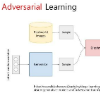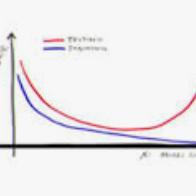Face anti-spoofing aims to prevent false authentications of face recognition systems by distinguishing whether an image is originated from a human face or a spoof medium. We propose a novel method called Doubly Adversarial Suppression Network (DASN) for domain-agnostic face anti-spoofing; DASN improves the generalization ability to unseen domains by learning to effectively suppress spoof-irrelevant factors (SiFs) (e.g., camera sensors, illuminations). To achieve our goal, we introduce two types of adversarial learning schemes. In the first adversarial learning scheme, multiple SiFs are suppressed by deploying multiple discrimination heads that are trained against an encoder. In the second adversarial learning scheme, each of the discrimination heads is also adversarially trained to suppress a spoof factor, and the group of the secondary spoof classifier and the encoder aims to intensify the spoof factor by overcoming the suppression. We evaluate the proposed method on four public benchmark datasets, and achieve remarkable evaluation results. The results demonstrate the effectiveness of the proposed method.
翻译:通过区分图像是来自人脸还是来自假介质,防止对面识别系统进行虚假认证; 我们提出一种叫 Doubly Aversarial 抑制网络(DASN)的新颖方法,用于域名 -- -- 不可知面部反涂鸦; DASN通过学习有效抑制与表面有关的因素(例如相机传感器、照明),提高向无形领域推广能力; 为了实现我们的目标,我们引入了两种对抗性学习计划。 在第一个对抗性学习计划中,通过部署多重歧视负责人来压制多个SIF,这些负责人受到针对编码器的培训。在第二个对抗性学习计划中,每个歧视负责人也经过对抗性培训,以抑制表面因素,而二级Spooof分类师和encoder小组的目的是通过克服抑制来强化表面因素。我们评估了四个公共基准数据集的拟议方法,并取得了显著的评价结果。



